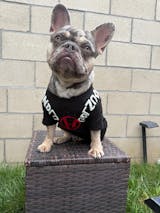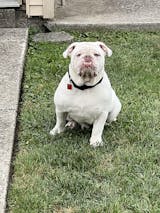Skin and Coat Problems in Dogs: What You Need to Know
Dogs are known for their shiny coats and soft fur, yet sometimes their skin and coat can face a few problems. If you’ve noticed your dog scratching, licking, or losing hair, it could be a sign of a skin or coat issue. These problems are pretty common, and most of the time they can be treated with a little extra dog care and attention. Let’s dive into the most common skin and coat issues that affect dogs and learn how you can help your precious pup look and feel better!

1. Allergies (Itching, Redness, Inflammation):
Just like people, dogs can have allergies too! Allergies are a very common cause of skin issues. Your dog might be allergic to food, pollen, dust mites, or even flea bites. When they come into contact with something they’re allergic to, their skin can become itchy, red, and inflamed. You might notice your dog scratching, biting, or licking their skin a lot. Some dogs even develop rashes or hot spots (painful, raw patches of skin). Read more on how to identify dog hot spots and how to help.
2. Parasites (Fleas, Ticks, Mites):
Parasites are another common cause of skin problems in dogs. Fleas, ticks, and mites love to catch a ride on your dog’s coat. Fleas can bite your dog and cause itching, redness, and sometimes even hair loss. Ticks are worse because they can carry diseases like Lyme disease. Mites can cause mange, a condition that leads to hair loss and intense itching.
If you suspect your dog has fleas or ticks, it’s time for a flea and tick treatment. There are many options available, including spot-on treatments, pills, and flea collars.
3. Infections (Bacterial, Fungal, & Yeast):
Sometimes your dog’s skin can become infected, leading to discomfort and you guessed it - more itching. Bacterial infections are often caused by open sores or cuts that become infected. Yeast infections are more common in dogs with floppy ears or those with wrinkly skin folds (such as French Bulldogs, English Bulldogs, Pugs, or Shar Peis). The signs of a skin infection include redness, a foul smell, and possibly even pus or discharge. Click here for an in-depth article on Bacterial and Fungal skin infections in dogs.
4. Seborrhea:
Seborrhea is a skin condition where your dog’s skin produces too much oil, making their coat look greasy or scaly. Dogs with seborrhea might have a lot of dandruff, a strong odor, or crusty patches on their skin. This condition is often caused by an underlying problem, like allergies, infections, or hormonal imbalances.
To help treat seborrhea, you may be recommended medicated shampoos or special treatments that reduce oil production and help to soothe the skin.
5. Hormonal Imbalances:
Your dog’s hormones can affect their skin and coat too. If your dog has an imbalance, it can lead to dry, flaky skin, hair loss, or changes in coat texture. One common hormone problem is hypothyroidism, which happens when the thyroid doesn’t produce enough hormones. This can cause thinning hair, weight gain, and sluggishness.
6. Digestive Issues:
Did you know that your dog’s skin health can be affected by what’s going on inside their tummy? Sometimes, digestive issues like food allergies or sensitivities can cause skin problems. If your dog has an upset stomach, diarrhea, or is struggling to digest certain foods, it can show up as itchy skin, hair loss, or even rashes.
A special diet or probiotics may help improve your dog’s digestion and, in turn, their skin health.
7. Constant Licking and Chewing:
When a dog is stressed, bored, or uncomfortable, they might start licking and chewing their skin excessively. This behavior can lead to hot spots, sores, or worse—skin infections. If your dog’s licking seems relentless, it might be a sign of anxiety, boredom, or even pain.
The first step is to try to figure out why your dog is licking so much. Are they stressed out, or do they have a physical issue? Providing toys, treats, and even behavior training can help distract them from licking.
8. Hair Loss:
Hair loss in dogs can happen for many reasons. It could be from parasites like fleas or mites, infections, hormonal issues, or even stress. If your dog is losing hair in patches or all over, it’s time to take the next steps. Hair loss can be a sign of a serious problem, so it’s important to address it quickly.
How To Help:
To keep your pup’s skin healthy and prevent infections, Squishface Wrinkle Wipes are the perfect option. These wipes contain ketoconazole and chlorhexidine, which are powerful ingredients that fight against bacteria, yeast, and fungus. They’re perfect for wiping down your dog after outdoor adventures, and are especially effective for cleaning tear stains, wrinkles, tail pockets, and between the toes.
For added protection, you can also use Squishface Wrinkle Paste, which is formulated with soothing ingredients of shea butter and coconut oil. These natural ingredients work together to create a water-repellent barrier on your dog’s skin, helping to lock in moisture, form a water-repellent barrier on the skin, and protect against irritation. This paste is ideal for use on tear stains, wrinkles, tail pockets, and even bacterial or fungal hot spots, providing your pup with soothing relief and protection wherever they need it most.

The Bottom Line:
In this blog post, we’ve covered a variety of common skin and coat problems in dogs, from allergies and parasites to infections and hair loss. Whether your pup is dealing with irritated skin, hot spots, or wrinkles, there are plenty of solutions to help them feel better. Squishface products, like the Wrinkle Wipes and Wrinkle Paste, offer effective ways to manage and prevent many of these issues, thanks to their helpful ingredients and natural formulas. By following these dog care tips and staying on top of your dog’s skin and coat health, you can keep your pup comfortable, happy, and looking their best!










